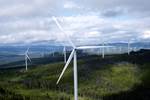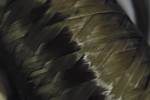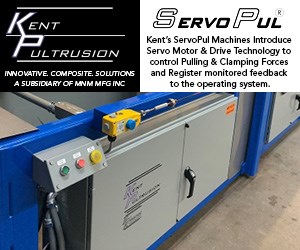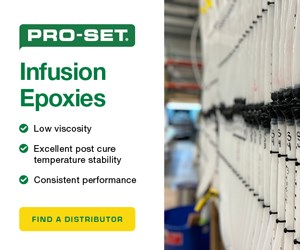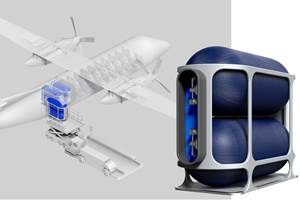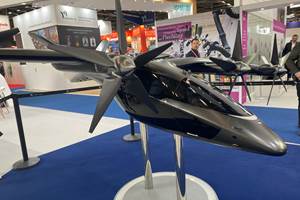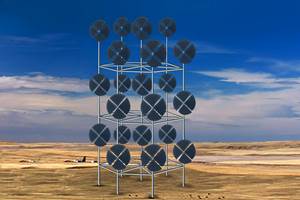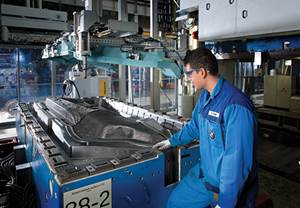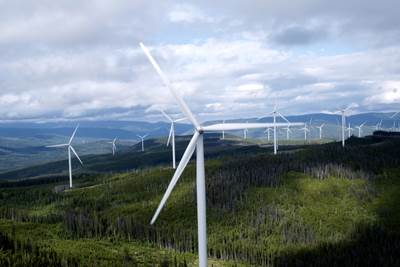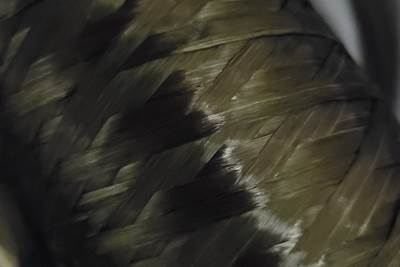Wind turbine blades: Back to the future?
Dayton Griffin, MSc, a senior principal engineer at DNV GL (Seattle, WA, US), considers the challenges that increasing blade length poses for designers/manufacturers in terms of weight mitigation, stiffness optimization, manufacturability and transportability.
In 1987, a 3.2-MW prototype wind turbine was installed in Hawaii. At the time, it was the largest wind turbine in the world. Manufactured by the Boeing Co. (Chicago, IL, US) under a NASA/US Department of Energy (DoE) development program, the MOD-5B had a rotor diameter of 97.5m and two blades, which featured partial-span, variable-pitch control, that is, the outermost portion of the blade could be rotated to adjust its aerodynamics.
This NASA program exposed the challenges for the design, manufacture and operation of MW-scale wind turbines. During the 1990s, mainstream commercial wind turbines were kW-scale and gradually growing in turbine power rating and rotor size. The prevailing rotor configuration was the “Danish” type: three blades with full-span, that is, entire-blade, pitch control.
Fast-forward to 2012. The Chinese company Envision Energy Co. Ltd. (Beijing) and its Danish subsidiary’s design team installed a 3.6-MW prototype with a two-bladed, partial-span pitch rotor. Currently, the U.S.-based company Zimitar Inc. (Benicia, CA US) is developing a similar rotor.
Are wind turbine rotor designs going “back to the future”? Not necessarily. First, the Danish configuration still prevails. More importantly, the MOD-5B rotor was all-steel and weighed 144 MT. The Envision prototype uses FRP materials for the blade structure, and incorporates a carbon fiber-reinforced polymer (CFRP) main rotor driveshaft — a first for a commercial, MW-scale turbine. In addition to reducing component weight, Envision reports the CFRP shaft has flexibility characteristics that mitigate loading compared with the steel alternative. Similarly, the Zimitar rotor design employs FRP blades and aerodynamic control devices. It has a 64% larger diameter than the MOD-5B and nearly twice the rated power at approximately 68% of the weight.
That points to another difference. Over the past two decades, blade length has increased in proportion to turbine rated power, and as rotor size expanded at a given rating. A decade ago, a typical 2-MW rotor had an 80m diameter. Today, to capture more energy, some 2-MW rotors have diameters of 110m and greater.
As blade length increased, it was increasingly critical to mitigate weight growth yet ensure adequate stiffness. These objectives were realized by using FRP materials with increased stiffness-/strength-to-weight. Current strategies fall into three categories: 1) increasing the fiber weight fraction (Wf) for glass fiber-reinforced plastic (GFRP), using standard E-glass, 2) using intermediate or high-modulus glass fibers, and/or 3) using alternatives with increased stiffness-/strength-to-weight, such as carbon fibers.
Historically, wind blades have benefited from a shift to manufacturing by vacuum-assisted resin transfer molding (VARTM) or by using prepreg materials, with increased compaction and Wf compared to the earlier wet-layup process. Although this resulted in weight and stiffness improvements, there are practical limitations for compaction of the thick laminates typical of MW-scale blades. Also, the fatigue strength of blade laminate tends to decrease with increased Wf. For GFRP materials, ongoing developments in fiber sizing and fabric architecture are improving fatigue strength and infusibility of heavy fabrics in thick laminates.
Another trend is the increased use of pre-consolidated elements in blade construction. These can include sub-elements that are fabricated and cured, using the same basic processes as the rest of the blade, or other processes, e.g., pultruded “rods” or “slats.” Sub-elements are integrated into the structure during layup and infusion of the blade shells and can enable increased Wf, improve fatigue resistance and ease manufacture.
CFRP has been used for load-carrying blade structure, most notably by turbine manufacturers Vestas Wind Systems A/S (Aarhus, Denmark) and Gamesa (Zamudio, Spain), and, in some recent models, by GE Wind Energy (Fairfleld, CT, US). CFRP has known strength and stiffness benefits, but disadvantages include cost, sensitivity to manufacturing variations and electrical conductivity, which can complicate lightning protection.
A “middle ground” approach between use of standard E-glass and CFRP is intermediate- and high-modulus glass fibers. Owens Corning (Toledo, OH, US) is an industry leader in this technology, with several fiber and fabric products developed for wind blades. Today, the use of these glass fibers appears to be growing somewhat faster than the use of CFRP.
Longer blades complicate not only manufacturing but transportation as well. Therefore, modular designs are of increasing interest. Gamesa was the first to commercialize a mid-span joint at the MW-scale on its G128 4.5-MW turbine blades. Wetzel Engineering Inc. (Lawrence, KS, US) also is developing a modular blade concept, using “spaceframe” technology.
As the trend toward increased blade size continues, the challenges of weight mitigation, stiffness optimization, manufacturability and transportability will motivate further developments in materials, processes and design. Not “back to the future,” but a promising future, nonetheless.
Related Content
Carbon fiber in pressure vessels for hydrogen
The emerging H2 economy drives tank development for aircraft, ships and gas transport.
Read MoreJEC World 2022, Part 3: Emphasizing emerging markets, thermoplastics and carbon fiber
CW editor-in-chief Jeff Sloan identifies companies exhibiting at JEC World 2022 that are advancing both materials and technologies for the growing AAM, hydrogen, automotive and sustainability markets.
Read MoreDrag-based wind turbine design for higher energy capture
Claiming significantly higher power generation capacity than traditional blades, Xenecore aims to scale up its current monocoque, fan-shaped wind blades, made via compression molded carbon fiber/epoxy with I-beam ribs and microsphere structural foam.
Read MoreMaterials & Processes: Fabrication methods
There are numerous methods for fabricating composite components. Selection of a method for a particular part, therefore, will depend on the materials, the part design and end-use or application. Here's a guide to selection.
Read MoreRead Next
CW’s 2024 Top Shops survey offers new approach to benchmarking
Respondents that complete the survey by April 30, 2024, have the chance to be recognized as an honoree.
Read MoreComposites end markets: Energy (2024)
Composites are used widely in oil/gas, wind and other renewable energy applications. Despite market challenges, growth potential and innovation for composites continue.
Read MoreFrom the CW Archives: The tale of the thermoplastic cryotank
In 2006, guest columnist Bob Hartunian related the story of his efforts two decades prior, while at McDonnell Douglas, to develop a thermoplastic composite crytank for hydrogen storage. He learned a lot of lessons.
Read More

